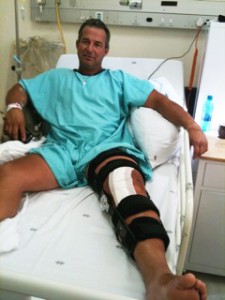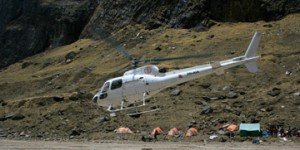
Global Rescue has medically evacuated a man in South Africa after a leopard bit through his leg, splintering his femur and causing a severe infection.
John Abraham, a 47-year-old veteran of safaris with Madubula Safaris, was in a remote corner of South Africa when the cat lunged at him, driving its teeth through Abraham’s leg, breaking off pieces of bone, and also snapping at his wrist. He was taken to a local clinic, where he underwent immediate surgery to clean and close the wound.
When the wound then showed signs of infection, the hunter’s accompanying family contacted Global Rescue. The company’s doctors reviewed his medical information and decided the South African native should be rushed to a top-tier hospital in Johannesburg.
Global Rescue immediately dispatched a medically equipped aircraft that brought him to the highly qualified facility. There, doctors found the wound to have been poorly treated and performed additional, limb-saving surgery to clean remaining bone fragments and thoroughly disinfect his leg.
“Always advising our clients to purchase Global Rescue [coverage] I never dreamed the day would come that I would be calling for their help,” John Abraham wrote in a letter. “What an absolutely professional and efficient service they provide. One phone call was all it took. They simply took over. An ambulance was arranged to transfer me to the landing strip. A fully equipped medical plane was there for me. They had me on a stretcher on the plane in minutes. The paramedics were excellent explaining everything to my wife and son who had come up to be with me, at the same time looking after me.”
###
 Only Global Rescue can evacuate and extract members from their point of injury, illness or emergency. We regularly send out rescue teams throughout the world using helicopters, bush planes, jet aircraft, ground vehicles, dog sleds, donkey carts or whatever is necessary to save members' lives.
Only Global Rescue can evacuate and extract members from their point of injury, illness or emergency. We regularly send out rescue teams throughout the world using helicopters, bush planes, jet aircraft, ground vehicles, dog sleds, donkey carts or whatever is necessary to save members' lives.Without this operational capability, rescuing members when they experience an emergency outside of a hospital or airport is impossible. The three critical pieces of the operations model work seamlessly together to save member lives:
- Paramedics and special operations veterans, backed by Johns Hopkins Medicine, speak directly with the member to provide life saving information that allows Global Rescue to confirm the need for evacuation without relying on 3rd party attending physicians
- Global Rescue Field Rescue teams deploy to the site of the emergency, take control of the situation and transport the member to safety without requiring them to transport themselves to a hospital or airport
- Global Rescue's partnered worldwide transportation assets evacuate the member from urban areas and the most remote locations on the planet without limiting transportation options to commercial aircraft or U.S. based medevac planes
For members the difference between Global Rescue and the rest is life and death.
